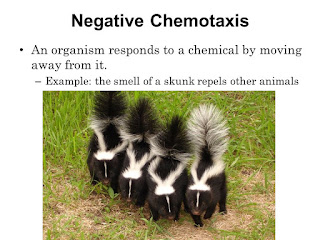Isolation and Selection of Bacteria Chemotactic to Chlorobenzene and Other Organic Chlorinated Compounds
Nowadays, polluting compounds are commonly present in the environment, which seriously affect human’s health. However, the current methods for detecting these compounds are costly, expertise-requiring and technically complicated as well. Thus, in this work, we studied the applicability of the chemotactic responses of bacteria toward some popular polluting organic chlorinated compounds (e.g. chlorobenzene) in order to develop a biological method that is simple, economical, and time-saving to detect those compounds in environmental samples. From 169 bacterial strains isolated from different national parks such as Cuc Phuong, XuanThuy and Tam Dao, three bacterial strains (HTD 3.8, HTD 3.12 and HTD 3.15) having the capability of negative chemotaxis towards chlorobenzene could be selected. Among them, HTD 3.8 displayed a better response to chlorobenzene, with a threshold concentration of approximately 0.3M. After testing the chemotactic responses of HTD 3.8 to several aromatic and/or chlorinated compounds, we discovered a high specificity of the responses of HTD 3.8 to molecules harbouring the functional group of –C-Cl (including also trichlomethane). Furthermore, conditions for the assay were optimized by investigating the chemotactic responses of HTD 3.8 in different minimal soft-agar media with different temperatures, NaCl concentrations and pHs. According to 16S rRNA gene sequencing result, HTD 3.8 is the most closely related to a Pseudomonas sp. The result of an initial experiment using trichloromethane as a competitive ligand suggested some possible chemotactic receptors of HTD 3.8 that are responsible for sensing –C-Cl containing compounds...
Chi tiết bài viết mời các bạn tham khảo tại đường link:
http://repository.vnu.edu.vn/handle/VNU_123/61555
Nowadays, polluting compounds are commonly present in the environment, which seriously affect human’s health. However, the current methods for detecting these compounds are costly, expertise-requiring and technically complicated as well. Thus, in this work, we studied the applicability of the chemotactic responses of bacteria toward some popular polluting organic chlorinated compounds (e.g. chlorobenzene) in order to develop a biological method that is simple, economical, and time-saving to detect those compounds in environmental samples. From 169 bacterial strains isolated from different national parks such as Cuc Phuong, XuanThuy and Tam Dao, three bacterial strains (HTD 3.8, HTD 3.12 and HTD 3.15) having the capability of negative chemotaxis towards chlorobenzene could be selected. Among them, HTD 3.8 displayed a better response to chlorobenzene, with a threshold concentration of approximately 0.3M. After testing the chemotactic responses of HTD 3.8 to several aromatic and/or chlorinated compounds, we discovered a high specificity of the responses of HTD 3.8 to molecules harbouring the functional group of –C-Cl (including also trichlomethane). Furthermore, conditions for the assay were optimized by investigating the chemotactic responses of HTD 3.8 in different minimal soft-agar media with different temperatures, NaCl concentrations and pHs. According to 16S rRNA gene sequencing result, HTD 3.8 is the most closely related to a Pseudomonas sp. The result of an initial experiment using trichloromethane as a competitive ligand suggested some possible chemotactic receptors of HTD 3.8 that are responsible for sensing –C-Cl containing compounds...
Chi tiết bài viết mời các bạn tham khảo tại đường link:
http://repository.vnu.edu.vn/handle/VNU_123/61555




Nhận xét
Đăng nhận xét